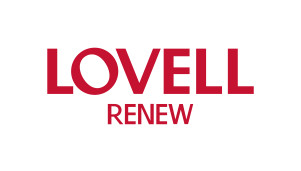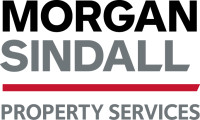At Lovell, we were interested to note that the government has changed the name of the Social Housing Decarbonisation Fund to the Warm Homes: Social Housing Fund. We are busy working with our partners on developing proposals for making their homes cheaper and greener to operate.
The new identity was particularly interesting for us, not only as it’s a critical funding programme for many of our partners, but because it just so coincides with the name change of our refurbishment and retrofit team to Lovell Renew, too.

…but, what’s in a name? Will it be more of the same under a different badge, or will both offer something different?
From a Lovell Renew perspective, we have offered planned maintenance and refurbishment services to the social housing sector up and down the country for many years. In recent times, we have also been investing in dedicated delivery and compliance teams, research, supply chains, and systems, to gear up for the net zero retrofit challenge. However, we’re still delivering and growing the wider maintenance services we have always provided.
We didn’t want to launch with great fanfare - or jump out of the proverbial cake as it were - we simply wanted to bring all our services, regions and expertise under one service banner, as a one-stop-shop for our partners, so that we can work with them to co-design the right solutions to their asset challenges.
Moving onto the change to the Warm Homes: Social Housing Fund. What do we know so far? There’s still a lot of detail yet to come out, but it’s been clear to us since day one that the Social Housing Decarbonisation Fund was on an evolutionary journey.
Wave 1 enabled us to work with partners, including Midland Heart, and Orbit, to ‘deep retrofit’; tackling the hardest first, and learning as went how we can gain efficiencies from operating at scale. These early demonstrators enabled us to get under the skin of the PAS2035 guidance, to tackle the hardest to treat homes first – the ‘worst first fabric first’ approach. We designed and tested new solutions to reduce heat demand, then learn what did – and importantly what didn’t – work well. We’ve been on a retrofit journey throughout Wave 1 with our partners, and our supply chain, and we’ve taken a huge amount of learning from them.
Wave 2 asked the sector to ‘go wide not just deep’; pushing out programmes of insulation and works to improve the thermal efficiency of as many homes as possible. Given that at the time we had hyper-inflation in energy costs and countless tenants being pushed into real fuel poverty, this instinctively felt like the right approach.
However, on reflection, the move away from reducing heat demand to just get homes to an energy-efficiency rating of ‘C’, meant that the ‘hard to treat’ properties were replaced with ‘easy wins’ that focused on measures such as cavity wall and loft insulation, windows, storage heaters, hot water cylinders and solar PV to achieve SAP 69. We must ensure that we don’t ignore fabric measures and focus on electric heating and heat pumps, as we cannot allow residents to see their energy bills increase because of decarbonising the heating system.
So, what will the third Wave do differently… and why ‘Warm Homes’?
We can see the government’s intent to allocate funds differently and take some of the ‘competition’ away, which we are sure many of our partners will welcome. In addition, the drive to bring all properties below an ‘EPC C’ rating up to standard will also make a huge difference.
However, the one thing we were really pleased to see in the announcement – which sits at the heart of our Lovell Renew strategy – is the focus on the people living in the homes.
The journey to net zero must remain a real policy focus, given that it’s estimated that emissions from our homes account for around a fifth of carbon emissions in the UK, and everyone in our industry need to work together to collectively build the capacity and expertise to meet the challenge.
The objectives have been set to tackle fuel poverty and “improve the comfort, health and wellbeing of social housing tenants”. To do this, we can help focus resources on making a positive and lasting impact to residents’ quality of life, and this we must all welcome.
This has been key to our learnings from all that has gone before and sits at the heart of how Lovell Renew will always work. We know that the best approach to all retrofit and refurbishment programmes is to always put residents’ needs and wellbeing first.
We pride ourselves in helping make sure our partners can make the best investment decisions into their assets – but above all we are here to improve people’s homes and their quality of life within them.
Both renaming exercises are therefore fundamentally about investing in developing the right technical expertise and solutions for the future, while at the same time showing that we care by focusing on people’s needs and wellbeing today. For us, that has always been in our DNA… it’s what we call ‘the Lovell Way’.






